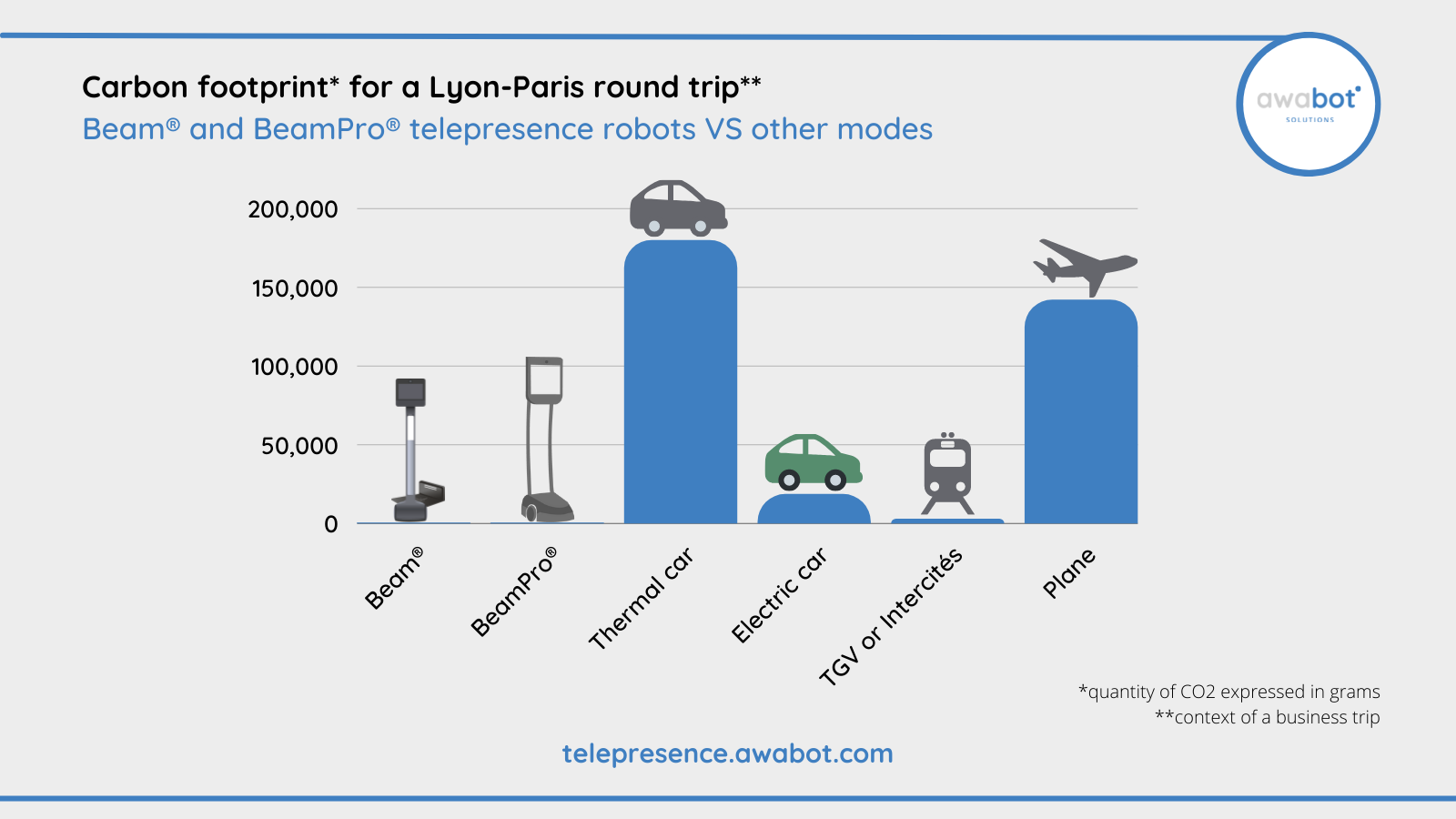Telepresence
Telepresence technology enables remote communication and collaboration, potentially reducing the need for travel and associated greenhouse gas emissions. This solution aims to provide an immersive experience that closely mimics in-person interactions.

Telepresence's carbon footprint (Awabot)
job openings
View open jobs in this Solution
Example Companies
- Cisco - Provides high-end telepresence systems for businesses.
- Zoom - Offers video conferencing and collaboration tools.
- Double Robotics - Develops telepresence robots for remote work and education.
- Suitable Technologies - Creates telepresence devices for various industries.
- Owl Labs - Produces 360-degree video conferencing devices.
Overview
Telepresence technology aims to reduce the need for physical travel by providing immersive remote communication experiences. This solution has the potential to significantly decrease greenhouse gas emissions associated with business and personal travel.
Progress Made
Significant advancements have been made in telepresence technology:
- High-Definition Video: Improved video quality for more lifelike interactions.
- Spatial Audio: Enhanced audio systems that replicate in-person conversations.
- Robotic Telepresence: Mobile robots that allow remote users to navigate physical spaces.
Solutions by Sector
Business Communication
- Video Conferencing: High-quality video calls for remote meetings and collaboration.
- Virtual Events: Large-scale online conferences and trade shows.
- Remote Team Management: Tools for managing distributed workforces.
Case Studies:
- Cisco TelePresence, Global: Reduced travel-related emissions by 47% for a multinational corporation (Cisco).
- IBM's Virtual Collaboration: Avoided 97,000 metric tons of CO2 emissions in one year through increased use of video conferencing (IBM).
- Zoom's Impact on Business Travel: A study found that widespread adoption of video conferencing could reduce business air travel emissions by up to 67% (Journal of Air Transport Management).
Education
- Distance Learning: Remote classroom experiences for students worldwide.
- Virtual Field Trips: Immersive educational experiences without travel.
- Global Collaboration: Connecting students and educators across borders.
Case Studies:
- Arizona State University, USA: Reduced carbon emissions by 1,400 metric tons annually through online learning programs (ASU).
- Open University, UK: Produces 85% fewer CO2 emissions per student compared to traditional universities, largely due to distance learning (Open University).
- Google Expeditions, Global: Virtual reality field trips reducing the need for physical travel in education (Google).
Healthcare
- Telemedicine: Remote medical consultations and diagnoses.
- Surgical Telepresence: Remote assistance for surgeries.
- Mental Health Services: Online therapy and counseling sessions.
Case Studies:
- Mayo Clinic, USA: Telemedicine program reduced patient travel by 368 miles per visit on average, significantly cutting emissions (Mayo Clinic).
- NHS England: Estimated that remote consultations could save 1.7 billion km of travel annually, equivalent to 400,000 tons of CO2 (NHS).
- Teladoc Health, Global: Reported that their telehealth services prevented 10 million pounds of CO2 emissions in 2020 due to reduced patient travel (Teladoc Health).
Lessons Learned
- Emission Reduction Potential: Telepresence can significantly reduce emissions from travel when implemented effectively.
- User Experience: The quality of the telepresence experience is crucial for widespread adoption and sustained use.
- Infrastructure Requirements: Reliable high-speed internet is essential for effective telepresence implementation.
- Cultural Adaptation: Organizational cultures need to adapt to embrace remote collaboration fully.
Challenges Ahead
- Digital Divide: Ensuring equitable access to high-quality telepresence technology globally.
- Energy Consumption: Addressing the energy requirements of data centers supporting telepresence services.
- Privacy and Security: Protecting user data and ensuring secure communications in telepresence systems.
- Human Factors: Overcoming the psychological barriers to replacing in-person interactions with telepresence.
Best Path Forward
- Technology Investment: Continue investing in R&D to improve telepresence quality and reduce costs.
- Policy Support: Implement policies that incentivize the use of telepresence over unnecessary travel.
- Infrastructure Development: Expand high-speed internet access to enable widespread telepresence adoption.
- Education and Training: Provide resources to help individuals and organizations effectively use telepresence technologies.
- Impact Assessment: Conduct comprehensive studies on the long-term environmental impacts of increased telepresence use.
Image credit: Awabot